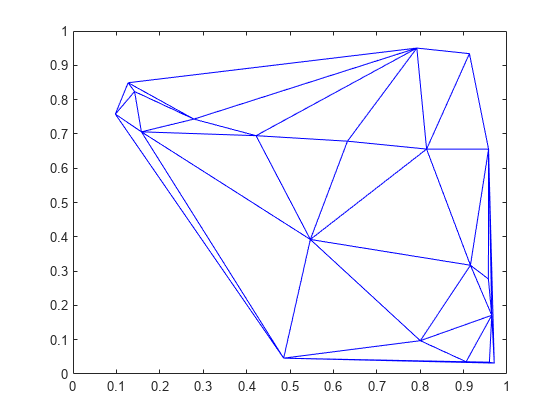delaunay
Delaunay 三角形分割
説明
例
入力引数
ヒント
delaunayの出力をプロットするには、関数triplot、trisurf、trimeshまたはtetrameshを使用します。Delaunay 三角形分割のさらに多くの機能を使用するには、
delaunayTriangulationオブジェクトを作成し、オブジェクト関数を使用して三角形分割の幾何学的量およびクエリ プロパティを計算することを検討してください。
拡張機能
バージョン履歴
R2006a より前に導入
